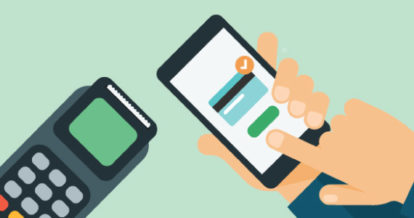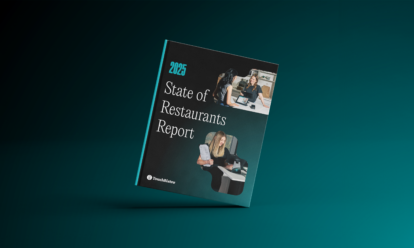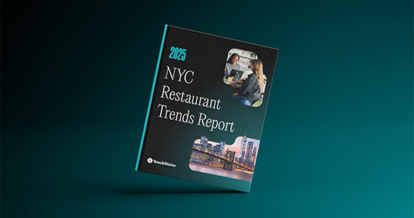Credit card technology has come a long way.
From “knuckle-buster” manual imprinters to the magnetic stripe to the futuristic act of holding your phone over a terminal, the credit card transaction has evolved. And so have credit cards–and the electronic card readers used to process them.
Believe it or not, the concept of paying for a product or service with a credit card was born out of an awkward restaurant transaction back in 1949.
The story goes that businessman Frank McNamara was entertaining clients at a Manhattan restaurant one cold February evening. When he received the bill, he realized he’d forgotten his wallet and was mortified. Fortunately, his wife was able to swoop in and pick up the tab, but McNamara was embarrassed enough to come up with a solution to prevent that from happening ever again.
In 1950, he returned to the restaurant with his business partner and a small cardboard card, a prototype of what would ultimately become the Diners Club® credit card.
Within a year, 10,000 of New York’s elite were using the card in dozens of restaurants and hotels. The cardboard was replaced by plastic in the 1960s and was made famous when Audrey Hepburn’s character Holly Golightly was blown away by the magic of the card in Breakfast at Tiffany’s. The original Diners Club card is still in use today for personal and corporate clients in the U.S. and Canada, and is offered by BMO Financial Group.
While it might have seemed magical in the past, mobile credit card processing is nothing to get excited about today. It’s considered a quick, easy, and more secure way to pay. But some are still hesitant to use the latest payment processing technology, including electronic card readers and digital payments.
To help you make smart payment decisions for your business, we’ll show you the history of credit card processing and how it has evolved over the years. And, before we’re done, we’ll demonstrate how today’s integrated payments solutions offer four things that more rudimentary technology can never do. Let’s get started!
The Early Days: Manual Imprinters
Prior to the Diners Club card, department stores in the 1900s were issuing their own proprietary charge cards for customers to use in their stores. By the 1970s, the major credit cards of today (AMEX, Mastercard, and Visa) had been born and were fronted by leading banks.
By necessity, stores and restaurants needed a terminal to process these transactions. Enter the manual imprinter, which literally copied the numbers and name on the credit card on a double receipt.
The customer signed it and received the original copy while the merchant kept the carbon copy, which was then mailed off to the bank for payment. These “machines” were used by restaurants and stores well into the 1990s. If you really want to live without technology, you’ll still find manual imprinters available – though you’d have to get comfortable with delayed payment processing.
Hold the Phone! Credit Card Processing Matures
Next in the history of credit card processing was the short-lived phone authorization. Each credit card had a phone number that merchants could call to read out the credit card number and wait for a representative to give a verbal confirmation that the transaction was authorized.
Imagine this payment method during the lunch rush!
But this credit card processing “technology” was typically used for large purchases, not routine transactions.
The First Point of Sale Terminal: A New Frontier of Credit Card Processing
By 1979, credit cards were being used with enough regularity to warrant some truly new payment processing technology.
Visa introduced the first point of sale (POS) terminal, which provided bold new ways to accept payment. By the 1980s, most credit cards were outfitted with a magnetic stripe, commonly known as a magstripe, that contained card information and could be read by these electronic card readers.
The use of electronic card readers added a layer of complexity (and new credit card fees) to each transaction, with new players including credit card networks and card associations.
But they also significantly sped up the authorization process. Merchants and restaurants no longer had to take on the financial risk of offering credit – payment processing companies do that for them.
Ever evolving, the payment processing industry has come up with a number of ways to use the electronic card reader, including:
1) Swipe and Sign
The magnetic stripe changed the game when it came to credit card processing. A formerly multi-step process now took one to two seconds to complete. What is swiping? It involves nothing more than swiping the card through the credit card reader and signing the receipt. Swipe cards became popular and people were using them everywhere.
However, the convenience of swipe payments didn’t come without a cost. It wasn’t long before a weakness in magnetic stripe cards was detected in the form of security breaches. Counterfeiting and credit card fraud was actually made easier with this technology. The swipe and sign method of credit card payment is still popular today, but merchants are responsible for a slightly higher fee than other methods because of the security risks.
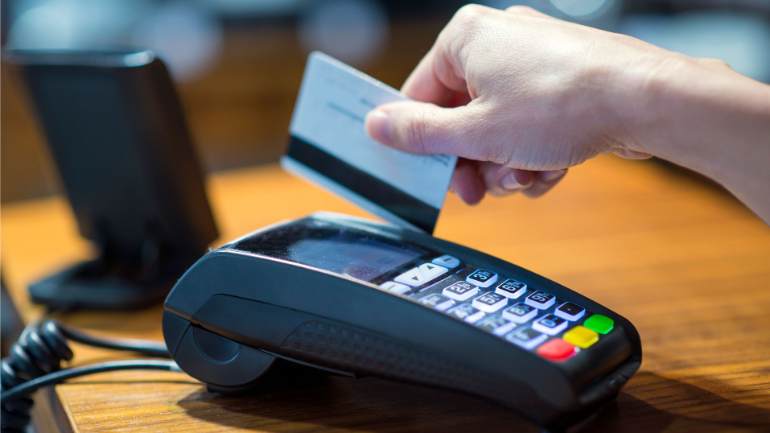
2) Dip and Sign
The answer to the weakness in the magnetic stripe led to the development of chip or EMV (Europay, Mastercard, and Visa) debit and credit cards.
What is EMV? This refers to the computer chip embedded in a credit card to provide an extra layer of security for cardholders and merchants.
With EMV, customers were able to “dip and sign,” which involves the customer inserting an EMV card (dipping) into the credit card reader and then signing a receipt to authorize the purchase. This type of payment is considered significantly more secure than swipe payments.
3) Chip and PIN
Most electronic card readers also offer a quicker way to pay, with the same security advantages as the dip and sign. Chip cards are inserted into the terminal and the customer enters a four- to six-digit PIN to complete the transaction. Not only is it faster, but chip and pin also makes it harder for the card to be used fraudulently if a card is lost or stolen.
4) Tap
Many debit and credit cards with chip technology can also be used to “tap” to pay without having to enter a PIN or sign a receipt. Information from the microchip in the card is transmitted through radio frequency antenna in the electronic card reader to authorize the purchase. Tap transactions are usually limited to purchases of $100 or less.
Tap is considered highly secure because the card never leaves the consumer’s hand and can only work in short range, so information can’t be picked up to create a counterfeit card. Plus, the customer’s name, bank account number and three-digit security code on the back of the card are not transmitted during the transaction.
5) Digital Payments
More and more consumers are making digital payments with their mobile wallet. A mobile wallet is a smartphone app that securely stores the bank details of a consumer’s credit or debit card.
Once the information is stored in the app, the mobile wallet can tap the same way a card would on a credit card reader. The three most popular mobile wallet apps are Apple Pay (for iPhones), Samsung Pay (for Samsung devices) and Google Pay (for Android users). The user simply hovers their smartphone with the mobile wallet app open over the payment terminal to pay. There’s no need to enter a PIN.
Mobile wallets are actually considered the safest way to make a payment.
Why?
The consumer’s credit card is encrypted by the app and locked behind the phone’s security features. They have to unlock their phone to access the mobile wallet, ensuring that a lost or stolen phone won’t lead to credit card fraud. Some phones even require facial recognition to unlock it, making mobile payments it virtually impervious to fraud.
The Traditional Credit Card Payment Process
Consider the number of steps associated with completing a “traditional” credit card payment transaction in a restaurant.
- The diner receives the bill fold, reviews the check, and puts down their card.
- The server returns to the table and whisks away the bill fold to process the transaction at a stationary credit card reader.
- When complete, two receipts are inserted into the bill fold and returned to the customer.
- The customer calculates a tip, signs the receipt, and exits the restaurant.
- The server returns to the terminal with the bill fold once more to enter the tip and close out the sale.
When you think about the early days of credit card transactions, this doesn’t seem like a hassle. But by today’s standards? It’s way too many steps.
As a 2023 survey by Forbes Advisor found, 53% of survey participants reported that they used digital wallets more often than traditional payment methods, such as paying with cash or swiping a physical debit or credit card.
Today’s savvy consumers don’t want to wait for a server to take away their credit card and then fuss with calculating a tip and signing a receipt. Many diners, including Millennials and Generation Xers, expect to whip out their phones to make a payment. Even inserting a card and entering a PIN seems like a lot of effort in comparison to using a mobile wallet.
More advanced POS technology that can be taken tableside can shorten the transaction while offering more convenience, efficiency and security.
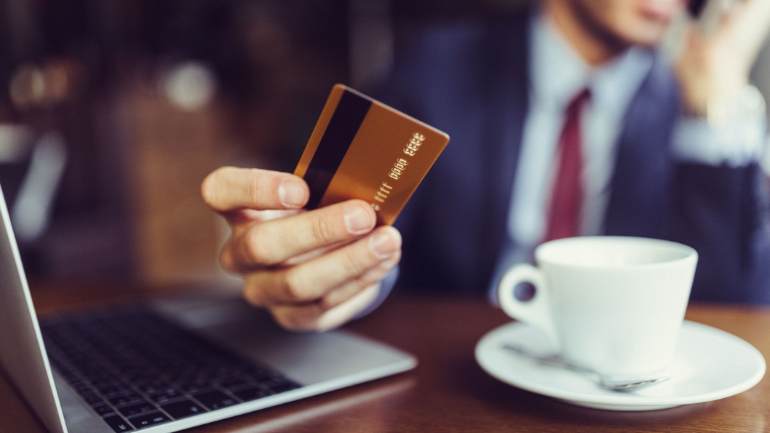
4 Ways the Latest Payment Technology Can Benefit Restaurants
Benefit #1: It Simplifies the Payment Process and Offers Choice
With tableside POS terminals and integrated restaurant merchant services, the server can handle the payment transaction in one swift movement. Most mobile electronic card readers offer the option of swipe and sign, dip and sign, chip and PIN, and digital payments. Diners can choose their favorite method of payment and finish the transaction in a fraction of the time it takes for the server to travel to and from a stationary POS and payment system.
Benefit #2: It Drives Efficiency
Speaking of the server, consider the wasted steps they have to take traveling to and from the table and a stationary POS system. Not only is it more physical effort, it requires more mental dexterity to serve all their tables while shuttling bill folds around the restaurant. Without the extra steps, servers are more likely to provide better, more meaningful customer service.
Benefit #3: It Increases Security
The more rudimentary the payment process, the higher the risk of fraud – which translates to higher interchange fees for the restaurant. When you offer the latest payment processing technology (i.e. digital payments; tap; chip and sign; and chip and PIN; and swipe payments), you’re reducing the risk of fraud for both the consumer and your restaurant.
Benefit #4: It Improves the Customer Experience
It goes without saying that your restaurant’s food is flawless. But there’s more to inspiring customer loyalty than a mouth-watering menu. When you introduce intangible qualities like less time waiting to pay, better service, more payment choices, and the reduced risk of credit card fraud, you’re enhancing the customer experience and allowing your diners to leave on a high note.
Our time travel to the electronic card reader’s humble beginnings and its fast-growing journey to increased efficiency uncovers a simple truth: the right technology at the right time can empower restaurant owners to make life faster and easier for themselves, their staff and their valued customers. In an increasingly cashless society, it’s important that we evolve with payment technology to give our customers what they really want.
Learn how to save money on payment processing fees
Sign up for our free weekly TouchBistro Newsletter

